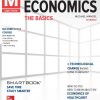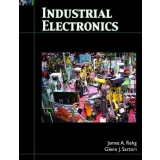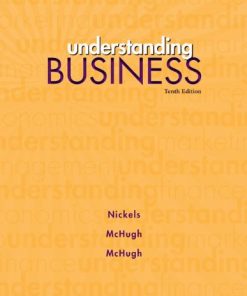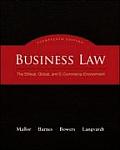Solutions Manual to accompany Industrial Electronics 9780132064187
$35.00
Solutions Manual to accompany Industrial Electronics 9780132064187
You will receive this product immediate after placing the order
*** YOU ARE BUYING the Solution Manual ***
– there’s a very high chance that you will see a very similar, if not exact the exact, question in the test!
–
–
We also faced similar difficulities when we were students, and we understand how you feel.
But now, with the Solutions Manual to accompany Industrial Electronics 9780132064187, you will be able to
* Anticipate the type of the questions that will appear in your exam.
* Reduces the hassle and stress of your student life.
* Improve your studying and also get a better grade!
* Get prepared for examination questions.
* Can save you time and help you understand the material.
This is the quality of service we are providing and we hope to be your helper.
Solution Manual is accurate.
If you have any questions, or would like a receive a sample chapter before your purchase, please contact us at [email protected]
Teaching Information – Chapter Overview
The following suggestions are offered for each of chapters:
Chapter 1 – The four important topics in the chapter are: an overview of manufacturing systems used in industry, development of a general process for troubleshooting large electro-mechanical systems, the learning pyramid, and the technology tree. The problems at the end of the chapter are a good review of DC and AC circuit theory problems
Chapter 2 – The chapter thoroughly covers switches and actuators, devices often overlooked in curriculum courses, which are important building blocks for all machines and systems. The process systems example introduced here using process parameter switches and discrete control is expanded in later chapters using more complex control systems. A robot control problem is introduced here using relay ladder logic, and in Chapter 12 the same problem will be solved using PLCs.
Chapter 3 – The chapter attempts to answer the question, “What are the minimum competencies in solid state analog devices and circuits necessary to know if you are going to work in automation control or on electronics found in industry.” If students have previous courses in solid-state devices and amplifier theory, this chapter may serve as an assigned reading chapter but without class lecture. Another option would be to use one class to hit the high spots for a general review of the topic.
Chapter 4 – The topics in this chapter are often not well understood by students even after the completion of an operational amplifier class. Review of the entire chapter, coverage of the more frequently used configurations, or coverage of the configurations not covered in previous courses are all options for this chapter in the course. In any case, operational amplifiers are used so often on industrial electronic systems that some degree of coverage of this chapter is important in an IE course.
Chapter 5 – Thyristors are used in most industrial electronic circuits and systems, so a thorough understanding of their operation and the common circuits that use them is critical. Complete coverage of this chapter is important for work in the IE area.
Chapter 6 – Automation sensors are also used on every machine and system in industry; therefore, they are another important topic area that should be covered in detail.
Chapter 7 – This chapter combined with Chapter 14 makes an excellent introduction for a full controls class or provide a good understanding of process controls when no additional control work is planned.
Chapter 8 – This chapter can be covered completely for a good overview of personal safety practices and the design of safety systems for machine safety. If a shorter version is desired cover only the first four sections.
Chapter 9 and 10 – Complete coverage of DC and AC motors plus control circuits and electronic drives.
Chapter 11 – This chapter includes a number of special purpose motors that may need to be covered if the motors course does not address the operation special purpose motors.
Chapter 12 – This chapter on PLCs can be used a variety of ways. If a previous PLC course is taken that includes Allen Bradley PLCs, then Section 12-6 can be eliminated. If the first course used a generic approach, then you may want to include this section so students would know how to program in the RS Logix 500 language. In either case, the balance of the chapter is important because it introduces the IEC 61131 standard for programming of PLCs. In addition to coverage of four of the five (the fifth language is not supported and used in the US) programming languages, the chapter covers tag (variable) based PLC programming. Few PLC courses cover the new languages, that is why it is included here.
Chapter 13 – An overview of embedded controllers is presented.
Chapter 14 – This is a comprehensive chapter on process control. When this chapter is grouped with Chapters 2, 6, 7 and 12 you have good instrumentation and controls coverage. This chapter explains the theory behind analog and digital process control and the development of a good control strategy.
Chapter 15 – Robotics includes two fundamental elements: hardware and software. Often courses address the hardware component but skip the programming element for servo and non-servo robots. This chapter on robots addresses both so if a previous robot course does not have a programming component, then Sections 15-7 through 5-10 would add that necessary competency.
Chapter 16 – The final chapter provides an overview of network theory and coverage of the networks found in manufacturing settings.
Be the first to review “Solutions Manual to accompany Industrial Electronics 9780132064187” Cancel reply
Related products
Solution Manual
Understanding Business Nickels 10th Edition Solutions Manual
Solution Manual
International Accounting Doupnik 4th Edition Solutions Manual
Solution Manual
Solution Manual for Psychology and Life 20th Edition by Gerrig











Reviews
There are no reviews yet.